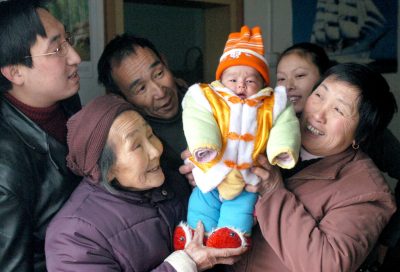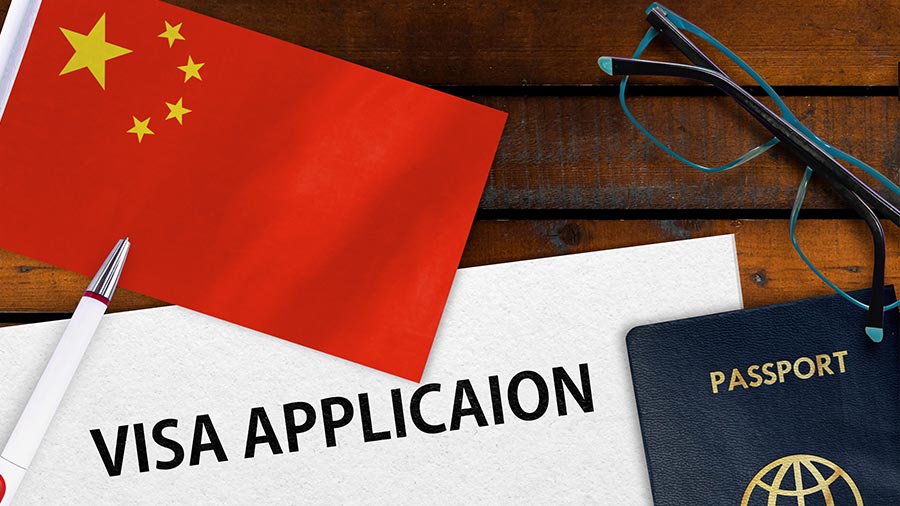China
China’s declining population and its new three-child policy

Author: Editorial Board, ANU
Family planning has for decades been one of China’s most controversial social policies. Mao Zedong was a strong advocate for population growth, believing it to be a source of strength for the fledgling People’s Republic. From 1949 to Mao’s death in 1976, China’s population increased from 540 million to 940 million.
When liberal economic reformers came to power in the late 1970s, China’s rapidly growing population was seen as an obstacle to economic development and improved living standards. Deng Xiaoping’s Politburo introduced new rules designed to ensure that population growth did not outpace economic growth: China’s so-called ‘one-child policy’.
From 1980 new rules set limits for births. Urban workers were limited to one child per family, but were often able to apply for permission for a second child if their first was a girl. Rural residents were generally permitted two children and ethnic minorities were often permitted three or more.
Although the one-child limit was only strictly applied in cities, the enforcement of birth limits everywhere was harsh. Violators were subjected to steep fines and forced abortions. To meet population targets, zealous local officials would often coerce sterilisations for women who had already given birth to the maximum number of children they were allowed.
Although many people suffered greatly from the birth restrictions, China’s citizens largely accepted the policies as necessary. As any visitor to China well knows, street-level conversations about China’s social and economic ills typically conclude with the observation that China’s population is too big (ren taiduo).
The problem now is that after spending decades convincing China’s citizens of the need to reduce the birth rate, China’s leaders now accept that the policy was either unnecessary or a mistake. Alarmed at the prognosis of an ageing population and a shrinking workforce, China’s policymakers have in recent years relaxed the restrictions. The central government abolished the one-child rule in 2015, allowing all married couples two children. Last week it announced they could have three.
So far the policy reversals have done little to arrest the fall in birth rates. Many Chinese families choose to have only one child because the perceived costs of raising children are too high. And many women are choosing not to have babies because structural inequalities at home and in the workplace make pregnancy and childrearing an unwelcome choice. This is a common trend across many societies. Twelve million babies were born in China in 2020, down from 14.65 million in 2019 — the lowest rate in six decades. With a fertility rate at 1.3, one of the lowest in the world, China’s population is expected to start declining by the end of this decade. Its working age population already peaked a decade ago.
The big question is what this means for China and what, if anything, policymakers should do about it?
Some analysts are concerned that China’s economy could become caught in an income trap if the population begins to decline before reaching high-income status. Others fret that the ageing population will become a huge burden on younger generations and on China’s fiscal resources. International relations specialists muse about the consequences of population decline for China’s superpower potential and for the balance of power with the United States, which is better positioned to harness immigration to compensate for its similarly low birth rate.
In our lead article this week, Bert Hofman provides an analysis of China’s population problem and options for policymakers. On the question of population impact on growth, Hofman notes that China’s workforce has been shrinking for years, and that demographics are no longer a contributing factor to economic prospects and that leaps in labour productivity are delivered by better educational outcomes and technological advances. He also says that, if needed, more workers could be mobilised by increasing the retirement age — currently 60 for men, 55 for women — and wonders whether technological advancement will make it easier to care for the elderly.
What matters for living standards is not the total population size but its structure. The dependency ratio is key: the number of dependants (below and above the working age population) relative to the working age population. With the working age population having peaked, the dependency ratio has been increasing rapidly. Increasing the retirement age will change that ratio…
China
New Publication: A Guide for Foreign Investors on Navigating China’s New Company Law

The sixth revision of China’s Company Law is the most extensive amendment in history, impacting foreign invested enterprises with stricter rules on capital injection and corporate governance. Most FIEs must align with the New Company Law by July 1, 2024, with a deadline of December 31, 2024 for adjustments. Contact Dezan Shira & Associates for assistance.
The sixth revision of China’s Company Law represents the most extensive amendment in its history. From stricter capital injection rules to enhanced corporate governance, the changes introduced in the New Company Law have far-reaching implications for businesses, including foreign invested enterprises (FIEs) operating in or entering the China market.
Since January 1, 2020, the Company Law has governed both wholly foreign-owned enterprises (WFOEs) and joint ventures (JVs), following the enactment of the Foreign Investment Law (FIL). Most FIEs must align with the provisions of the New Company Law from July 1, 2024, while those established before January 1, 2020 have bit more time for adjustments due to the five-year grace period provided by the FIL. The final deadline for their alignment is December 31, 2024.
In this publication, we guide foreign investors through the implications of the New Company Law for existing and new FIEs and relevant stakeholders. We begin with an overview of the revision’s background and objectives, followed by a summary of key changes. Our in-depth analysis, from a foreign stakeholder perspective, illuminates the practical implications. Lastly, we explore tax impacts alongside the revisions, demonstrating how the New Company Law may shape future business transactions and arrangements.
If you or your company require assistance with Company Law adjustments in China, please do not hesitate to contact Dezan Shira & Associates. For more information, feel free to reach us via email at china@dezshira.com.
This article is republished from China Briefing. Read the rest of the original article.
China Briefing is written and produced by Dezan Shira & Associates. The practice assists foreign investors into China and has done since 1992 through offices in Beijing, Tianjin, Dalian, Qingdao, Shanghai, Hangzhou, Ningbo, Suzhou, Guangzhou, Dongguan, Zhongshan, Shenzhen, and Hong Kong. Please contact the firm for assistance in China at china@dezshira.com.
China
Lingang New Area in Shanghai Opens First Cross-Border Data Service Center to Streamline Data Export Process

The Lingang New Area in Shanghai has launched China’s first Cross-Border Data Service Center to facilitate data export for companies in Shanghai. The center will help with applications, data catalogs, and management, aiming to provide legal and safe cross-border data transfer mechanisms.
The Lingang New Area in Shanghai’s Pilot Free Trade Zone has launched a new cross-border data service center to provide administrative and consulting services to companies in Shanghai that need to export data out of China. The service center will help facilitate data export by accepting applications from companies for data export projects and is tasked with formulating and implementing data catalogs to facilitate data export in the area. The Shanghai cross-border data service center will provide services to companies across the whole city.
The Lingang New Area in the Shanghai Pilot Free Trade Zone has launched China’s first Cross-Border Data Service Center (the “service center”). The service center, which is jointly operated by the Cybersecurity Administration of China (CAC) and the local government, aims to further facilitate legal, safe, and convenient cross-border data transfer (CBDT) mechanisms for companies.
The service center will not only serve companies in the Lingang New Area but is also open to companies across Shanghai, and will act as an administrative service center specializing in CBDT.
In January 2024, the local government showcased a set of trial measures for the “classified and hierarchical” management of CBDT in the Lingang New Area. The measures, which have not yet been released to the public, seek to facilitate CBDT from the area by dividing data for cross-border transfer into three different risk categories: core, important, and general data.
The local government also pledged to release two data catalogs: a “general data” catalog, which will include types of data that can be transferred freely out of the Lingang New Area, and an “important data” catalog, which will be subject to restrictions. According to Zong Liang, an evaluation expert at the service center, the first draft of the general data catalog has been completed and is being submitted to the relevant superior departments for review.
In March 2024, the CAC released the final version of a set of regulations significantly facilitating CBDT for companies in the country. The new regulations increase the limits on the volume of PI that a company can handle before it is required to undergo additional compliance procedures, provide exemptions from the compliance procedures, and clarify the handling of important data.
Also in March, China released a new set of technical standards stipulating the rules for classifying three different types of data – core, important, and general data. Importantly, the standards provide guidelines for regulators and companies to identify what is considered “important” data. This means they will act as a reference for companies and regulators when assessing the types of data that can be exported, including FTZs such as the Lingang New Area.
This article is republished from China Briefing. Read the rest of the original article.
China Briefing is written and produced by Dezan Shira & Associates. The practice assists foreign investors into China and has done since 1992 through offices in Beijing, Tianjin, Dalian, Qingdao, Shanghai, Hangzhou, Ningbo, Suzhou, Guangzhou, Dongguan, Zhongshan, Shenzhen, and Hong Kong. Please contact the firm for assistance in China at china@dezshira.com.
China
A Concise Guide to the Verification Letter of Invitation Requirement in the China Visa Process

The application procedures for business visas to China have been simplified, with most foreigners now able to apply for an M/F visa using only an invitation letter from a Chinese company. Some countries are eligible for visa-free entry. However, a Verification Letter of Invitation may still be needed in certain cases. Consult the local Chinese embassy for confirmation.
In light of recent developments, the application procedures for business visas to China have undergone substantial simplification. Most foreigners can now apply for an M/F visa using only the invitation letter issued by a Chinese company. Additionally, citizens of certain countries are eligible to enter China without a visa and stay for up to 144 hours or even 15 days.
However, it’s important to note that some applicants may still need to apply for a “Verification Letter of Invitation (邀请核实单)” when applying for an M/F visa to China. In this article, we will introduce what a Verification Letter of Invitation is, who needs to apply for it, and the potential risks.
It’s important to note that in most cases, the invitation letter provided by the inviting unit (whether a public entity or a company) is sufficient for M/F visa applications. The Verification Letter for Invitation is only required when the Chinese embassies or consulates in certain countries specifically ask for the document.
Meanwhile, it is also essential to note that obtaining a Verification Letter for Invitation does not guarantee visa approval. The final decision on granting a visa rests with the Chinese embassy abroad, based on the specific circumstances of the applicant.
Based on current information, foreign applicants in Sri Lanka and most Middle East countries – such as Turkey, Iran, Afghanistan, Syria, Pakistan, and so on – need to submit a Verification Letter for Invitation when they apply for a visa to China.
That said, a Verification Letter for Invitation might not be required in a few Middle East countries, such as Saudi Arabia. Therefore, we suggest that foreign applicants consult with their the local Chinese embassy or consulate to confirm in advance.
This article is republished from China Briefing. Read the rest of the original article.
China Briefing is written and produced by Dezan Shira & Associates. The practice assists foreign investors into China and has done since 1992 through offices in Beijing, Tianjin, Dalian, Qingdao, Shanghai, Hangzhou, Ningbo, Suzhou, Guangzhou, Dongguan, Zhongshan, Shenzhen, and Hong Kong. Please contact the firm for assistance in China at china@dezshira.com.






